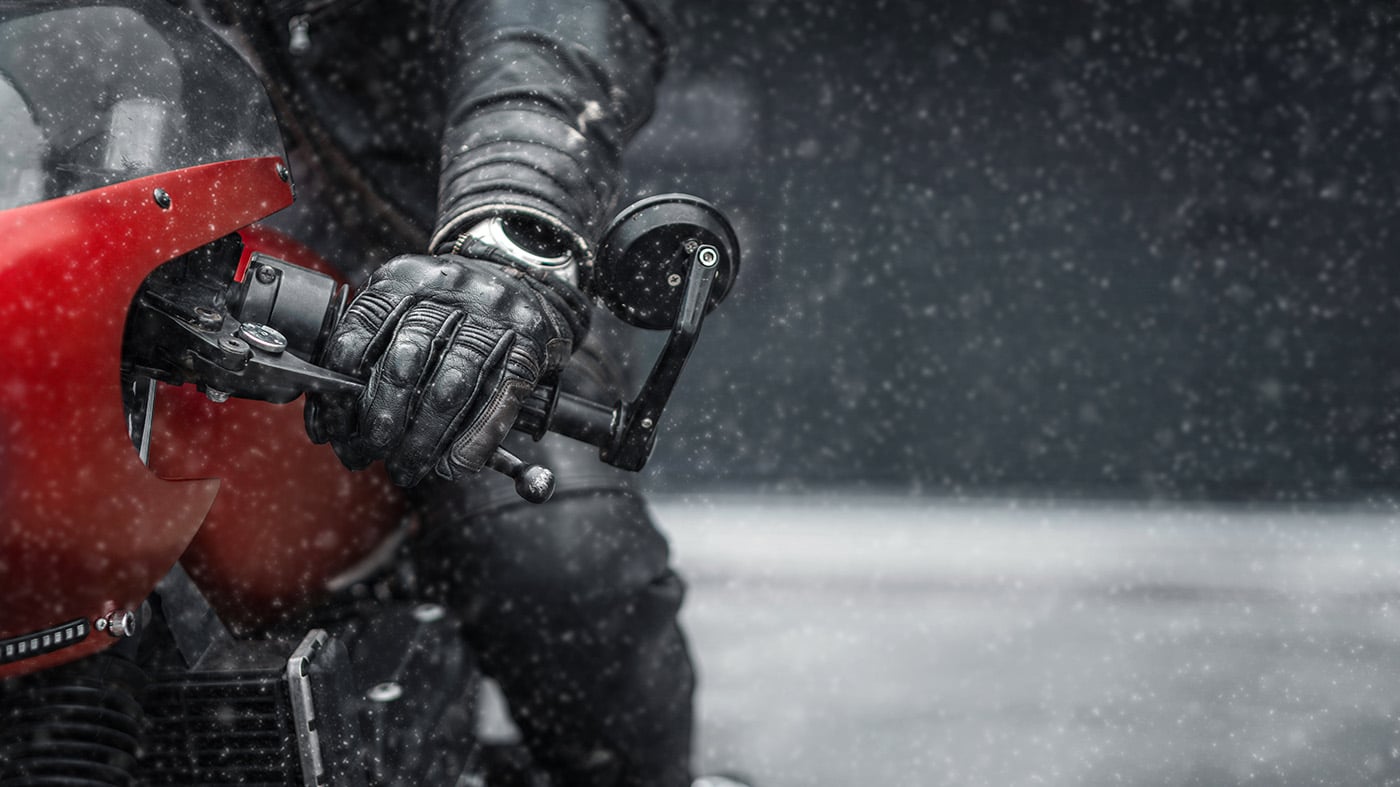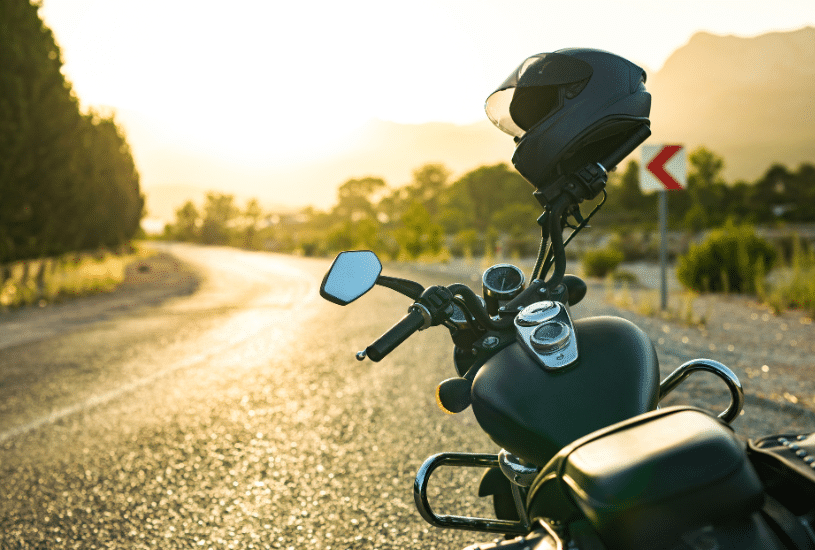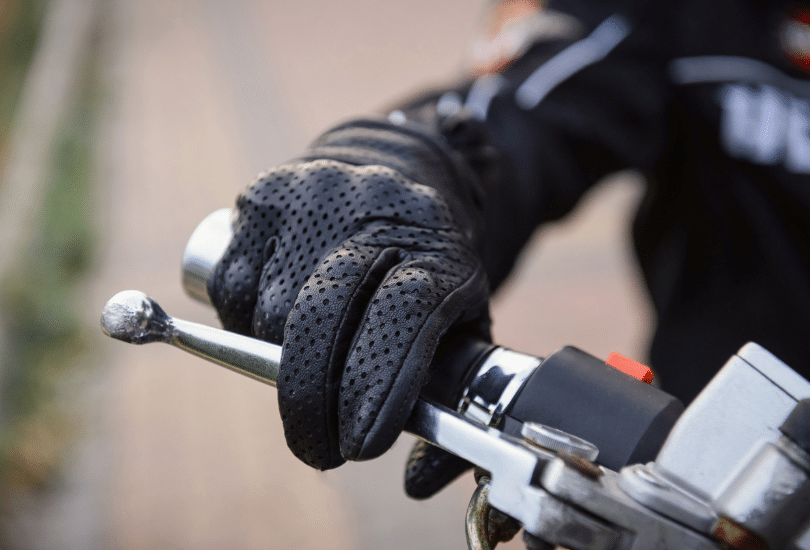The weather may be cold and maybe wet, but that shouldn’t stop you from enjoying a brisk motorcycle ride this winter. With the proper riding gear, a tuned-up rig, and some common sense, you’ll be ready for some safe cold-weather motorcycle riding.
Alyssa Bridges of the Law Tigers gives some solid winter riding tips, including perhaps the most important one: Keep your core warm. The goal is to stop water and wind from reaching your core, and to keep Mother Nature out while you are riding.
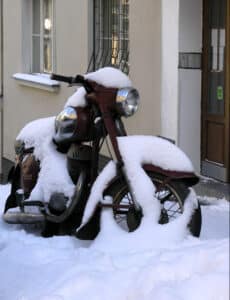
Photo by Matěj Baťha.
CC BY-SA 4.0 Deed | Attribution-ShareAlike 4.0 International.
“My first my first recommendation would be to choose gear that blocks out water, like those with GORE-TEX, a popular fabric technology used by many brands to create weather resistance,” Bridges suggests. “GORE-TEX is much like how Kleenex is technically a brand of tissue paper, GORE-TEX is a type of weatherproofing used by several brands and is usually a nice indicator of some solid gear.”
VIDEO: Best Cold Weather Motorcycle Gear Tips
Riding a motorcycle in winter can present unique challenges due to colder temperatures, potential ice or snow on the road, and reduced visibility. Here are six items to consider for a safer winter motorcycle ride:
Insulate Yourself: Wear appropriate winter riding gear, including thermal layers, a windproof and waterproof outer layer, insulated gloves, and waterproof boots.
- Pro Tip: Use a balaclava or neck gaiter to protect your neck and face from the cold wind. Also consider heated gloves and other outerwear such as heated vests or socks.
Maintain Visibility: Ensure all lights on your motorcycle are working properly, including headlights, brake lights, and turn signals.
- Pro Tip: Use reflective materials on your gear to enhance visibility, especially during low-light conditions.
Tire Check: Inspect your tires regularly for proper inflation and tread depth. Cold weather can affect tire pressure, so keep them inflated according to the manufacturer’s recommendations.
- Pro Tip: Consider switching to winter tires designed for colder temperatures and potentially icy conditions.
Warm-Up Your Motorcycle: Allow your motorcycle to warm up for a few minutes before riding. Cold temperatures can affect the engine’s performance, so give it time to reach its optimal operating temperature.
- Pro Tip: Be gentle with the throttle and brakes until the engine is fully warmed up.
Road Surface Awareness: Be cautious of potential hazards such as ice patches, snow, and salt on the road. These can reduce traction and make braking more challenging.
- Pro Tip: Avoid sudden movements or sharp turns, and maintain a safe following distance from other vehicles.
Emergency Preparedness: Carry an emergency kit with essentials like a first aid kit, a small toolset, and tire repair equipment.
- Pro Tip: Inform someone about your travel plans, including your route and estimated arrival time, in case of unforeseen circumstances.
Remember that riding in winter requires extra caution, and it’s essential to be prepared for changing weather conditions. If the weather is particularly severe, consider postponing your ride or using alternative transportation methods when possible.
Don’t Forget to Protect Your Neck
Now that you’ve got some gear, maybe a route mapped out with a stop for lunch. What are you missing to ride? Bridges suggests you may be overlooking that space between your chin and collarbone may need some attention.
“You’ve got a good multiple-season jacket, maybe one with a full-sleeve liner on, but have you covered the most vulnerable part of your body?” Asks Bridges. “Enter the neck buff. These things come in all different styles and thicknesses. I personally leave a neck buff in every single one of my saddle bags, so if the weather changes unexpectedly, at least I can keep my neck warm.”
The time it takes for unprotected skin to freeze depends on various factors, including the wind chill factor, humidity, and individual tolerance to cold. Wind chill is a significant factor when traveling at high speeds on a motorcycle.
The wind chill factor is a measure of how wind and cold feel on exposed skin. The actual temperature may be 35 degrees Fahrenheit (1.7 degrees Celsius), but the wind chill can make it feel significantly colder, especially at 70 mph.
Protect Yourself From Frostbite
Frostbite is a major concern when riding in the winter, or in colder, inclement weather. The Mayo Clinic lists the signs and symptoms of frostbite, including:
- At first, cold skin and a prickling feeling
- Numbness
- Skin that looks red, white, bluish-white, grayish-yellow, purplish, brown or ashen, depending on the severity of the condition and usual skin color
- Hard or waxy-looking skin
- Clumsiness due to joint and muscle stiffness
- Blistering after rewarming, in severe cases
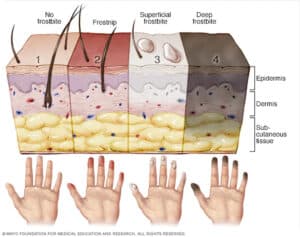
Places where frostbite most commonly occurs includes the fingers, toes, nose, ears, cheeks and chin. Because of skin numbness, you may not realize you have frostbite until someone points it out. Changes in the color of the affected area might be difficult to see on brown or Black skin.
According to the Mayo Clinic, frostbite occurs in several stages:
- Frostnip is a mild form of frostbite. Continued cold exposure leads to numbness in the affected area. As your skin warms, you may feel pain and tingling. Frostnip doesn’t cause permanent skin damage.
- Superficial frostbite. Superficial frostbite causes slight changes in skin color. The skin may begin to feel warm — a sign of serious skin involvement. If you treat frostbite with rewarming at this stage, the surface of the skin may appear mottled. And you may notice stinging, burning and swelling. A fluid-filled blister may appear 12 to 36 hours after rewarming the skin.
- Deep (severe) frostbite. As frostbite progresses, it affects all layers of the skin as well as the tissues that lie below. The skin turns white or blue-gray and you lose all sensation of cold, pain or discomfort in the area. Joints or muscles may stop working. Large blisters form 24 to 48 hours after rewarming. The tissue turns black and hard as it dies.
When to See a Doctor
Not sure if you need a doctor? The Mayo Clinic suggests seeking medical attention for frostbite if you experience:
- Signs and symptoms of superficial or deep frostbite
- Increased pain, swelling, inflammation or discharge in the area that was frostbitten
- Fever
- New, unexplained symptoms
- Seek emergency care for hard, cold, blotchy skin.
- Also get emergency medical help if you suspect hypothermia, a condition in which the body loses heat faster than it can be produced. Signs and symptoms of hypothermia include:
- Intense shivering
- Slurred speech
- Drowsiness and loss of coordination
What You Can Do in the Meantime
While you wait for emergency medical help or a doctor’s appointment, take appropriate self-care measures, such as:
- Wrap the person with hypothermia in warm blankets until help arrives
- Removing wet clothing
- Protecting the affected area from further cold
- Not walking on frostbitten feet
- Reducing pain with a pain reliever
Heated Gloves and Grips Combat Cold Hands
Bridges said accessories such as windscreens, or even heated gloves (and socks!) can help minimize the elements when riding in winter. Before purchasing heated items, make sure your bike can handle those power accessories, she said.
“Do double check your motorcycle’s electronic accessory capabilities by referencing your owner’s manual, or at least give it a proper Google search before purchasing some fancy heated gear,” Bridges said. “And if your luck has run as thin as those summer gloves you’ve got, a gas station hack (you can do) is ask for rubber gloves, or food service gloves – these will provide one last layer of weatherproofing.”
The Law Tigers are Committed to Protecting Riders
Sign up for the Law Tigers FREE Rider Benefit Kit and immediately enjoy information on motorcycle matters, no-recovery, no-fee motorcycle accident representation, and other important benefits.

